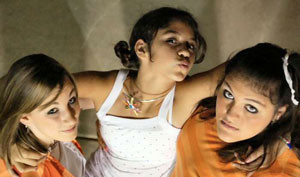Each teenager is an individual with a unique personality and special interests, likes and dislikes. In general, however, there is a series of developmental tasks that everyone faces during adolescent years. A teenager’s development can be divided into three stages – early, middle, and late adolescence. The normal feelings and behaviors of adolescents for each stage are described below.
Early Adolescence (12-14 years)
- Movement towards independence
- Struggle with sense of identity.
- Moodiness.
- Improved abilities to use speech to express oneself.
- More likely to express feelings by action than words.
- Close friendships gain importance.
- Less affection shown to parents, with occasional rudeness.
- Realization that parents are not perfect; identification of their faults.
- Search for new people to love in addition to parents.
- Tendency to return to childish behavior, fought off by excessive activity.
- Peer group influences, interests and clothing style.
- Mostly interested in present and near future.
- Greater ability to work.
- Girls ahead of boys.
- Same-sex friends and group activities.
- Shyness, blushing and modesty.
- Show-off qualities.
- Greater interests in privacy.
- Experimentation with body (masturbation).
- Worries about being normal.
- Rule and limit testing.
- Occasional experimentation with cigarettes, marijuana and alcohol.
- Capacity for abstract thought.
Middle Adolescence (14-17 years)

- Movement towards independence
- Self-involvement, alternating between unrealistically high expectations and poor self-concept.
- Complaints that parents interfere with independence.
- Extremely concerned with appearance and with one’s body.
- Interest in moral reasoning.
- Firmer identity.
- Ability to delay gratification.
- Ability to think ideas through.
- Ability to express feelings in words.
- More developed sense of humor.
- Stable interests.
- Greater emotional stability.
- Ability to make independent decisions.
- Ability to make compromise.
- Pride in one’s work.
- Self-reliance.
- Greater concern for others.
- More defined work habits.
- Higher level of concern for the future.
- Thoughts about one’s role in life.
- Concerned with serious relationships.
- Clear sexual identity.
- Capacities for tender and sensual love.
- Feelings of strangeness about one’s self and body.
- Lowered opinion of parents, withdrawal of emotions from them.
- Effort to make new friends.
- Strong emphasis on the peer group with the group identity of selectivity, superiority and competitiveness.
- Periods of sadness as the psychological loss of the parent takes place.
- Examination of inner experiences, which may include writing a diary.
Late Adolescence (17-19 years)

- Intellectual interests gain importance.
- Some sexual and aggressive energies directed into creative and career
interests. - Concerned about sexual attractiveness.
- Frequently changing relationships.
- Movement towards heterosexuality with fears of homosexuality.
- Tenderness and fears shown towards opposite sex.
- Feelings of love and passion.
- Development of ideals and selection of role models.
- More consistent evidence of conscience.
- Greater capacity for setting goals.
- Capable of useful insight.
- Stress on personal dignity and self-esteem.
- Ability to set goals and follow through.
- Acceptance of social institutions and cultural traditions.
- Self-regulation of self-esteem.
Teenagers will naturally vary slightly from the descriptions in the charts above, but the feelings and behaviors listed for each area are, in general, considered normal for each of the three states. The mental and emotional problems that can interfere with these normal development states are treatable. If a teenager seems very different from the descriptions presented here, it may be appropriate to consult with a mental health professional.
